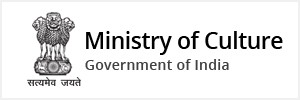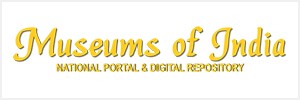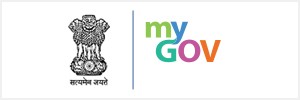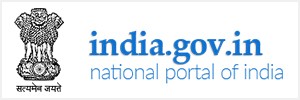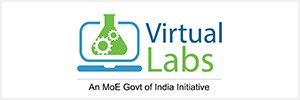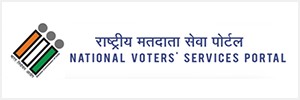Gretchen Jennings
I’m so happy that NCSM has a blog; I think it must be one of the very few museum blogs in India. Because museums are part of a global network today, I think it is so important for museum professionals to share their thoughts and perspectives. Right now museum global dialog has a distinctly Western tilt. I look forward to the day when more museum professionals from Asia and Africa add their voices to the conversation.
At the invitation of NCSM, and its Director General, Mr. Ganga Rautela, I have been fortunate to travel and teach in India four times since 2009. My colleague Karen Lee, who is a curator in the Numismatics Department at the Smithsonian Institution in Washington, DC, and I have taught successive cohorts of students in the MS Program in Science Communication in 2009, 2011, 2012, and 2014. We teach a class that combines theories of museum education with approaches to visitor studies, culminating in practical experiments in which students assess and then modify specific exhibits at Science City in Kolkata. We have written about our course in the August 2010 issue of Propagation, the journal of NCSM. Karen and some of our students created a video of one year’s experiences on YouTube at https://www.youtube.com/watch?v=UGP_adAqXmE
Since I started blogging in 2011 I have posted the perspectives of my students in Kolkata on my own blog, www.museumcommons.com, in July 2012 and in January 2014.
In this post I’d like to reflect a bit on some of the developments I’ve observed in Indian museums, in particular science museums, in the five years that I have been visiting this most interesting and dynamic country. Through my visits I have learned that India has one of the longest museum traditions of any country in Asia, or in the world for that matter. The early Surveys established by the British beginning in the late 18th century formed the foundation for many of the archaeological, anthropological, and botanic collections of India’s museums today. The Indian Museum in Kolkata, first established in 1814, is the oldest museum in Asia and the seventh oldest in the world. It recently celebrated its 200th anniversary by renovating and reopening a number of its galleries installed with state-of-the art display cases, lighting, and security. In what I see as a recognition of the highly trained professionalism of its staff, NCSM administrators, designers, exhibit developers, and other experts were tasked by the Indian Ministry of Culture to work with the Indian Museum in preparing for its February 2014 reopening. In a January 2014 meeting with its new director, Karen Lee and I learned of his plans to revivify both the internal structures and the outward orientation of this organization which has such a significant place in the global history of museums.
In the context of this history, it’s encouraging to see new developments, especially in science museums:
- The increased use of new media and social media. A number of museums have a strong presence on Facebook, and this blog is another positive step. Many of the students in our 2014 class, and some from earlier classes, are now on Twitter, but I would like to see more participation in this medium from both individuals and organizations. There are a number of Indian journalists that I follow to get an ongoing sense of politics and culture. It would be wonderful if more museum professionals in India contributed their perspectives to the very lively current conversation about museums and their role in the 21st century that occurs daily on Twitter.
- Several NCSM museums have opened hands-on experimentation and science discovery labs in the last year or so. In January I visited new labs at the National Science Museum in Delhi, directed by Mr. D. Rama Sarma, and at the Birla Industrial and Technical Museum in Kolkata, directed by Mr. Emdadul Islam. And Kolkata’s Science City, headed Mr. Arjit Dutta Choudhury has had a very current NanoLab for several years now.
- Some museums are being very proactive in addressing current social and cultural issues. For example, NCSM museums have created excellent exhibitions to educate their communities on climate change and water conservation. Through Facebook I see frequent postings from former student Niranjan Gupta on the work of the regional science center of which he is head. The Bardhman Science Centre is doing great work in the area of public health education. Both Birla and Bardhman also run regular teacher workshops to develop skills in the use of computers and new media in the classroom.
- Museums all over the world are discussing the role of museums in the areas of social justice, politics and cultural change. See this site on Museums, Power, and Politics http://museumspoliticsandpower.org/ Some museums have wholeheartedly embraced these activities, while others are (and may be compelled by circumstances to be) more cautious. An important but contentious anniversary in Indian society this year is the 30th anniversary of the explosion at the (then) Union Carbide pesticide factory in Bhopal, in which thousands were injured and thousands more killed. It remains one of the worst industrial accidents of all time. There is a nascent effort to memorialize through a museum the disaster and the continuing effort of the survivors to receive just compensation. Readers can find an article by Indian museum professional and journalist Rama Lakshmi on the Bhopal Museum Project at http://name-aam.org/uploads/downloadables/EXH.fall_11/13%20EXH_fall11_The%20morality%20of%20memory_Lakshmi.pdf Could science museums play a role in educating the Indian public about both the science behind this event and its social, cultural, political, and public health implications? It’s a question that an outsider like me cannot answer.
I am so grateful to have participated in a small way in the vibrant museum culture of India. I hope to continue and extend my contacts with all the friends and colleagues whom I have met. Through them I have gained a much richer understanding of our global museum community.

